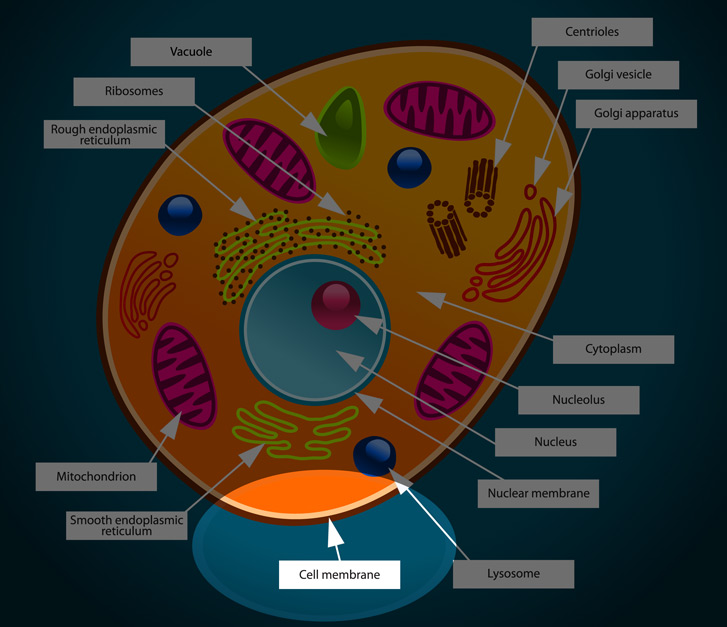Animal Cell Membrane – Interactive Diagram

To view and interactive animal cell membrane:
(1) Please click here to add RUFFLE to you browser
(2) Click here to load the game.
Cool stuff to know & some terms you may hear regarding animal cell membranes:
- Fluid Mosaic Model: Proteins drift sideways in a fluid bilayer of phospholipids.
- Semipermeable: Permeable to some substances and not others.
- Membrane Proteins: Partially or totally embedded in the membrane.
Functions of the cell membrane include:
- Separation from the extracellular (outside) environment
- Regulation of what types of molecules and compounds can enter the cell
- Recognition of chemical signals (via receptors in the membrane)
- Elimination (removal) of cellular waste
Materials can move into and out of the cell by:
- Diffusion: Substances move across the phospholipid bilayer on their own.
- Facilitated diffusion: Substances move across the bilayer with help.
- Active transport: Uses energy to move a substance across the membrane.
Nutrients and building blocks:
Proteins, fats, and carbohydrates are broken down into amino acids, fatty acids, and simple sugars, respectively. These nutrients then enter cells and act as building blocks for needed compounds.
Crossing the membrane
What gets through? 🙂
- Small hydrophobic nonpolar molecules (oxygen, carbon dioxide, hydrocarbons)
- Small uncharged polar molecules (water, glycerol)
What doesn’t? 🙁
- Large uncharged polar molecules (glucose)
- Ions (H+, Na+, bicarbonate, K+, Ca++, Cl-, Mg++)
How things get through:
- Osmosis: Water moves from areas of high concentration to areas of low concentration.
- Diffusion: Molecules, compounds, gases, liquids, and ions move from areas of high concentration to areas of low concentration.
- Active Transport: ATP is used to move something against a concentration gradient. Moving from high to low is the natural flow. Moving low to high requires a pump.
- Pumps: Usually a means of active transport.
- Channels: Usually the facilitators (helpers) in facilitated diffusion. The flow is from high concentration to low concentration via these “diffusion helpers.”
Additionally, you may wish to check out this Animal Cell handout – label & color the parts of the animal cell!
